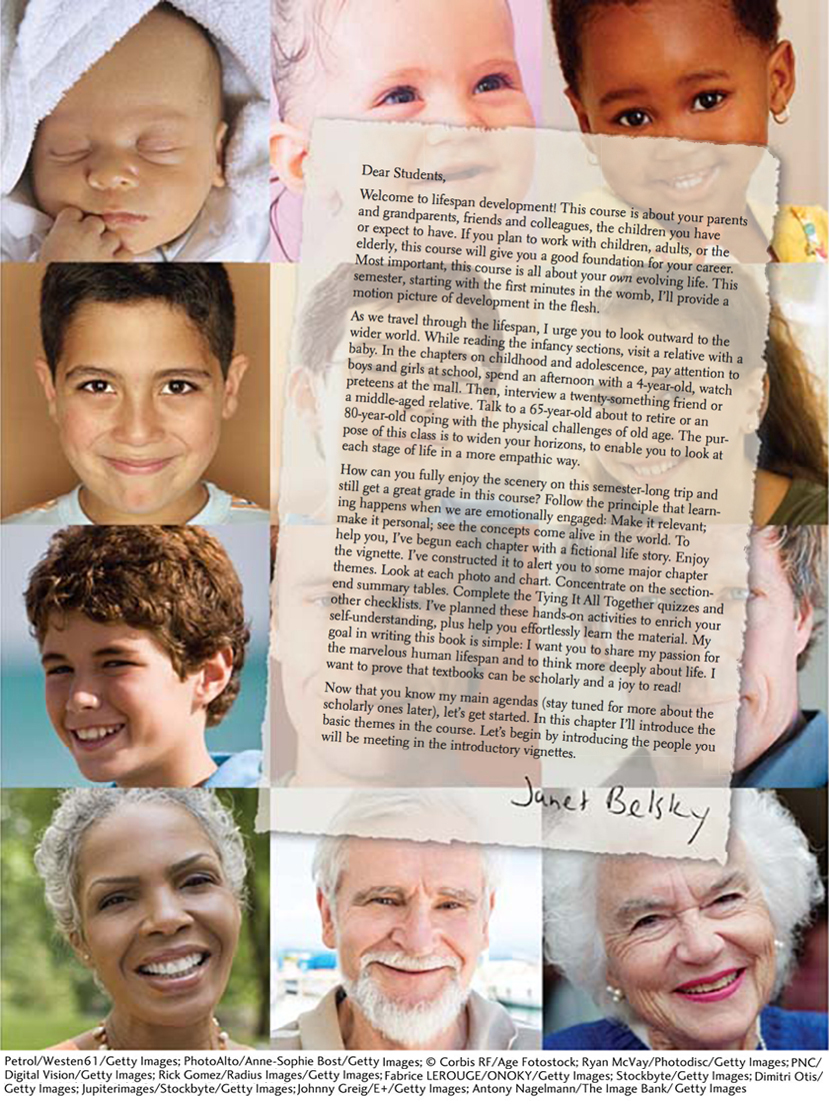Chapter Introduction

The People and the Field
CHAPTER 1
CHAPTER OUTLINE
The Impact of Cohort
The Impact of Socioeconomic Status
The Impact of Culture and Ethnicity
The Impact of Gender
Behaviorism
Psychoanalytic Theory
Attachment Theory
Evolutionary Psychology
Behavioral Genetics
HOW DO WE KNOW … That Our Nature Affects Our Upbringing?
Nature and Nurture Combine: Where We Are Today
HOT IN DEVELOPMENTAL SCIENCE: Environment-
Emphasis on Age-
The Developmental Systems Perspective
Two Standard Research Strategies
Designs for Studying Development
Critiquing the Research
Emerging Research Trends
Some Concluding Introductory Thoughts
Susan is having a party to celebrate Carl’s wonderful life. Losing her husband was tough, but Susan takes comfort in the fact that during their 50-
First to arrive on Saturday were Maria and baby Josiah, whom Susan and Carl met on a cross-
Finally, Kim, her husband Jeff, and baby Elissa drove up. Although Susan was devastated when this close neighborhood couple moved across the country 9 months ago, she has been thrilled to witness Elissa’s transformations through the miracles of Skype. Now, it’s time to (finally) envelope that precious 1-
As they sit down to dinner, Kim reports that since Elissa began walking, she doesn’t slow down for a minute. Actually, it’s kind of depressing. Elissa used to go to Susan with a smile. Now, all she wants is Mom. The transformation in Josiah is even more astonishing. Now that he is 8, that precious child can talk to you like an adult!
Over the next hour, the talk turns to deeper issues: Kim shares her anxieties about putting Elissa in day care. Matt talks about the trials and joys of step-
Susan tells the group not to worry. The sixties and early seventies (until Carl’s massive stroke) were the happiest time of their lives. Now, with her slowness, her progressing vision problems, and especially that frightening fall she took at Kroger’s last week, the future looks bleaker. Susan knows that life is precious. She treasures every moment she has left. But the eighties won’t be like the seventies. What will happen when she really gets old?
Is Susan right that the sixties and early seventies are life’s happiest stage? If you met Susan at age 30 or 50, would she be the same upbeat person as today? Are Jamila’s worries about her mental abilities realistic, and what are some secrets for staying passionately in love with your spouse? Why do 1-
Developmentalists, also called developmental scientists—